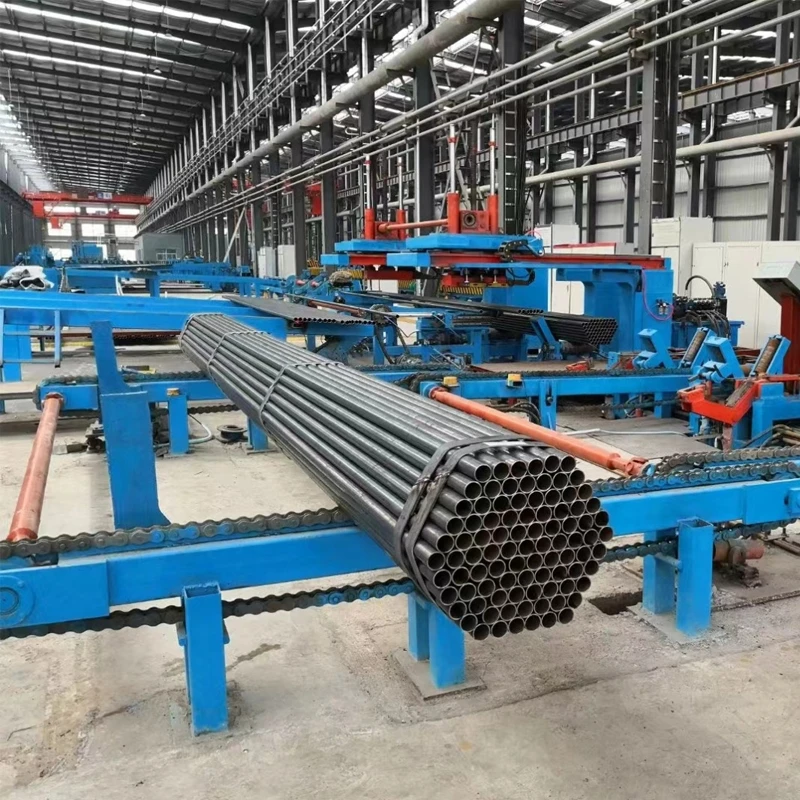Sheet Formation Equipment for Efficient Production Processes
Understanding Sheet Forming Machines A Key Tool in Manufacturing
In the ever-evolving landscape of manufacturing, sheet forming machines play a pivotal role in transforming raw materials into functional products. These machines are essential in various industries, including automotive, aerospace, construction, and consumer goods, where the demand for precision components is paramount. This article delves into the functioning, types, and benefits of sheet forming machines.
What Are Sheet Forming Machines?
Sheet forming machines are specialized equipment designed to shape and manipulate sheet metal into desired configurations. They operate using various techniques that may include bending, deep drawing, stamping, and hydroforming, among others. The primary goal of these machines is to achieve precise dimensions and mechanical properties, thus ensuring the produced parts meet specified tolerances and performance criteria.
Types of Sheet Forming Machines
1. Press Brakes These machines are widely used for bending metal sheets into different angles. A press brake uses a punch and die to create bends, allowing manufacturers to produce components with complex shapes. The ability to program and automate these machines enhances efficiency and reduces human error.
2. Hydraulic Presses Utilizing hydraulic force, these presses can perform various sheet forming processes, including stamping, mold pressing, and drawing. Hydraulic presses are particularly useful for creating large components with high strength and uniform thickness.
3. Roll Forming Machines Designed for continuous production, roll forming machines pass sheet metal through a series of rollers to achieve a specific cross-sectional profile. This method is especially effective for producing long lengths of uniform profiles, such as channels and angles.
4. Deep Drawing Machines These machines are ideal for producing deep, hollow shapes from flat sheets. During the deep drawing process, the sheet metal is drawn into a die cavity by a punch, significantly reducing the thickness while increasing the depth of the component.
5. Stretch Forming Machines These machines are used to stretch and form sheet metal into contoured shapes. Stretch forming is particularly common in the aerospace industry for creating lightweight structures with high strength.
sheet forming machine

Benefits of Sheet Forming Machines
The advantages of utilizing sheet forming machines are substantial
- Precision and Accuracy Modern sheet forming machines are equipped with advanced control systems that ensure high levels of precision. This minimizes material wastage and enhances production efficiency.
- Versatility With a wide range of forming techniques available, these machines can adapt to various materials, including aluminum, steel, and plastic. This versatility allows manufacturers to cater to diverse market needs.
- Cost-Effectiveness By automating the sheet forming process, manufacturers can significantly reduce labor costs and production time. Precise fabrication also means less rework and scrap, further driving down costs.
- Improved Product Quality Consistent and accurate forming processes lead to higher quality end products. Sheet forming machines enable manufacturers to meet stringent quality standards, which is crucial in competitive markets.
- Innovation in Design The capabilities of sheet forming machines allow designers to explore innovative shapes and configurations that were previously challenging or impossible to achieve, fostering creativity and advancement in product development.
Conclusion
In conclusion, sheet forming machines are indispensable in today's manufacturing environment. Their ability to produce complex shapes with high precision and efficiency makes them essential in a variety of industries. As technology continues to advance, we can expect further enhancements in sheet forming processes, enabling even greater innovation and productivity in the manufacturing sector. Understanding the intricacies of sheet forming machines is vital for manufacturers looking to stay competitive and meet the demands of an ever-changing market.
-
High Frequency Straight Seam Welded Pipe Production Line|BzZhou Xinghua|Precision Welding&EfficiencyNewsJul.30,2025
-
High Frequency Straight Seam Welded Pipe Production Line - BzZhou Xinghua|Precision Engineering&EfficiencyNewsJul.30,2025
-
High-Frequency Straight Seam Welded Pipe Production Line-BzZhou Xinghua Machinery Equipment Manufacturing Co., LTD.NewsJul.30,2025
-
High-Frequency Straight Seam Welded Pipe Production Line-BzZhou Xinghua Machinery Equipment Manufacturing Co., LTD.|Precision Manufacturing, High EfficiencyNewsJul.30,2025
-
High Frequency Straight Seam Welded Pipe Production Line-BzZhou Xinghua Machinery Equipment Manufacturing Co., LTD.|Precision Steel Pipe Manufacturing&Industrial EfficiencyNewsJul.29,2025
-
High-Frequency Straight Seam Welded Pipe Production Line-BzZhou Xinghua Machinery Equipment Manufacturing Co., LTD.|Precision Steel Pipe Manufacturing&Industrial EfficiencyNewsJul.29,2025


